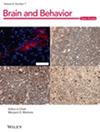Baseline Impaired Insight Predicts Longitudinal Brain Atrophy in Alzheimer's Disease and Related Cognitive States: A 30-Month Cohort Study From the ADNI Dataset
Abstract
Background
Impaired insight can be understood clinically as a loss of ability to appropriately recognize one's own disease status. Investigating insight in Alzheimer's disease (AD) and its relation to longitudinal changes in brain structure is important to understand the disease progression.
Objective
To examine how the character of insight changes with disease stage and assess whether baseline levels of impaired insight can predict rate of brain atrophy across a period of 30 months in a cohort of subjects consisting of subjective memory complaint (SMC), mild cognitive impairment (MCI), AD, and cognitively normal (CN) controls.
Methods
Data from 794 eligible participants were extracted from the Alzheimer's Disease Neuroimaging Initiative (ADNI) dataset. Insight levels were estimated by the Measurement of Everyday Cognition (ECog). Impairment was further categorized into overestimation or underestimation of ability. Brain atrophy rates were estimated by measuring change in gray matter volume within 30 months.
Results
Overestimating ability was significantly correlated with increased whole-brain atrophy rates (p < 0.001) independent of general cognitive decline. Overestimation of ability exhibited significant correlations with increased atrophy in specific regions of the brain including the medial temporal lobe, fusiform gyrus, and hippocampus.
Discussion
The present results suggest a statistically significant correlation between overestimation of ability and increased rates of subsequent brain atrophy. This is particularly notable in regions of the brain such as the hippocampus. However, further study into the phenomenon of insight and its progression over the disease course is required before its potential clinical utility can be fully assessed.


 求助内容:
求助内容: 应助结果提醒方式:
应助结果提醒方式:


